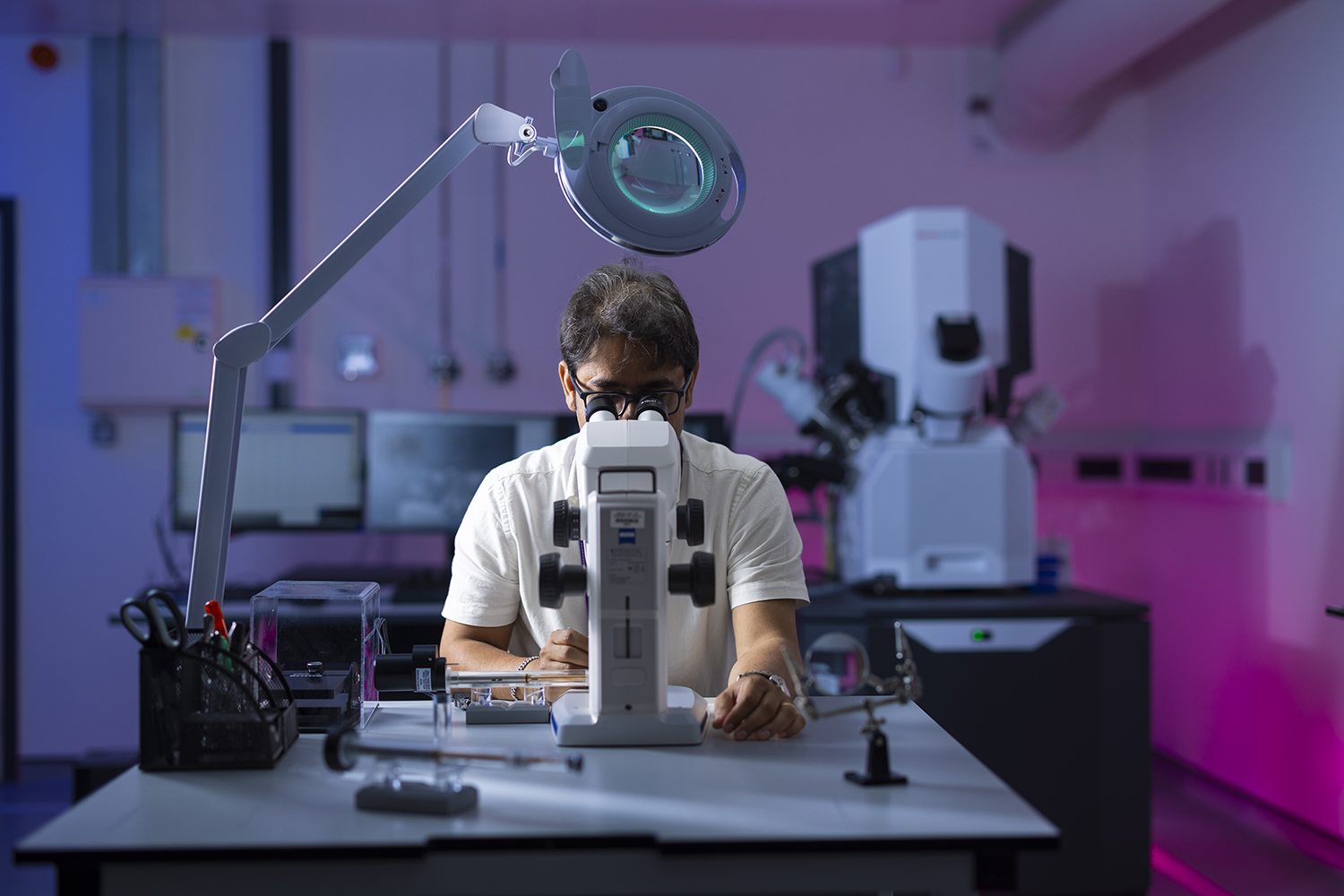Partner with us to access leading research and development technologies.
Bridge can address your advanced materials needs and that of the wider UK’s manufacturing sector. We achieve this by giving you access to world-class R&D at the interface of science and engineering and, through links to all departments at the University of Lincoln and a consortium of industry R&D partners, we access expertise spanning the majority of industry sectors e.g. advanced materials and engineering, chemical, pharma and healthcare, manufacturing, digitalisation, energy and net zero, packaging, and sustainability, amongst others.
Share
KEY AREAS:
- Manipulating materials surfaces and interfaces
- Designing formulated materials and interrogating ingredient interactions
- Controlling crystallisation and ordering in materials structure
- Energy capture and storage through control of material electronic properties
- Green processes including new replacement chemistries, waste valorisation methods and process circularisation

These methods allow us to understand the shape, texture and dimensions of your products and samples. Electron microscopy allows you to get unprecedented detail of the surface or interior of your samples. Our FIB-SEM instrument allows us to slice, image and analyse samples. EDX mapping allows us to understand the elemental composition of the sample in a localised manner. TEM allows imaging and analysis from the microscale down to atomic resolution. Our electron microscopes also allow electron diffraction, which can help understand crystal structure of materials.
The bridge has access to highly advanced electron microscopes, as well as a team of specialists that can help make you understand how these methods can help address your problems.
These methods help understand the texture, shape, friction and wear properties of your samples or products. Atomic force microscopy allows us to image and measure the surface of samples, including surface texture and roughness. The resolution of this method allows us to see samples from scales from hundreds of microns down to the atomic level. One advantage of this method is that it generates 3 dimensional data, allowing us to measure length and also height of features seen. Our AFM lab is equipped with multiple state-of-the-art microscopes allows great flexibility in measurements. Our tribology equipment allows you to see how your sample responds to wear and friction, allowing streamlining of production of more robust materials. In addition to the advanced equipment, we have a team of specialists who can help you to understand how these methods can help you.
We have a range of methods that allow molecular characterisation of products and samples. Spectroscopy allows us to see which molecular species exist in your samples, streamlining product development and optimisation. Chromatographic and mass spectroscopic methods allow highly sensitive measurement of molecular profiles in samples. These methods are reference analytical techniques, in a wide range of areas. Combination of these methods with microscopy also allows us to determine the location of different species in a sample, which is very important for material properties, as well as understanding how materials change over time. We also have a team of specialists who can help you to understand how these methods can help you to solve your industrial problems.
These methods help to understand materials structure which lead to improvements in properties and process.es X-ray diffraction is useful to understand internal structure of materials, as well as for material identification. With our suite of instruments, diffraction experiments can be done on powders to provide relative quantitation on the levels of different crystalline minerals present, or on single crystal specimens to determine the molecular structure of the crystal at atomic resolution. Thermos-spectroscopic methods allow us to understand how materials change under the influence of temperature and can also identify gases and other species within a material. In addition to the advanced equipment, we have a team of specialists who can help you to understand how these methods can help you.
We can use a range of computational techniques to understand both existing and novel materials allowing the end-user to tune their materials to the desired functional properties. Methods employed here at Bridge range from using density functional theory (DFT) to investigate molecular properties, such as superconductor critical temperatures, to 3D imaging of physical structures, coupled to image analysis techniques, to analyse internal microstructures. In addition, we can simulate how novel material designs will work in use and help develop advanced engineering solutions for your needs. Using these computational solutions, we can help you to understand, and improve, product performance when direct assessment of material properties is not practical.
